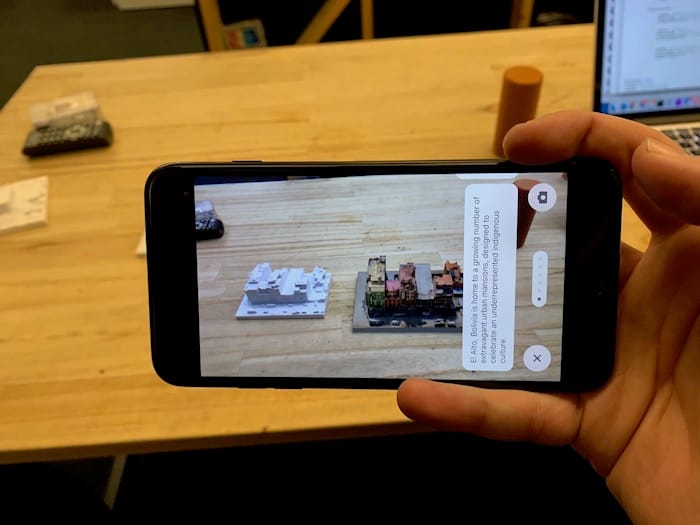Pros and cons of using augmented reality in the newsroom
When covering vast topics, such as climate change, AR can help readers picture the reality within their familiar surroundings. But not everything is meant to be seen in 3D



When covering vast topics, such as climate change, AR can help readers picture the reality within their familiar surroundings. But not everything is meant to be seen in 3D

This article was migrated from an old version of our website in 2025. As a result, it might have some low-quality images or non-functioning links - if there's any issues you'd like to see fixed, get in touch with us at info@journalism.co.uk.
Augmented reality (AR) has the power to bring a real sense of context to the reader - instead of just showing the aerial photograph, a map, or a satellite image of a particular area, you can offer your audience almost a first-hand experience by showing the details as well as the scale of an object.
"If, for example, you are discussing Lebanese cedars, the famous old trees that are dying out because of climate change, why not to put one in your front yard just to see how large and significant it is?," suggested Steve Johnson, founder of an AR production company SeeBoundless.
"You know the size of your house or your car. When you put an object next to it, your brain is now processing a contextualised image in relation to what you are already familiar with, as opposed to the size of the screen of a desktop or a smartphone."

Johnson said that, like any new tech, AR should be treated with a bit of scepticism and used wisely. While not suitable for all topics, the 3D imagery proves particularly useful when reporting on large topics that are hard to grasp.
"Climate change is one of those topics. Showing a glacier in a three-dimensional space or a coral reef that is bleaching over time, on a scale in a physical place, can really bring it to life."
There used to be something here that couldn't be migrated - please contact us at info@journalism.co.uk if you'd like to see this updated!
Unlike virtual reality, where a user wears a headset and is shut out in a completely different world, AR allows readers to have a shared experience. Not only can you simply show your smartphone screen to a friend, technology now enables us to create physical spaces where a 3D image can be projected and seen by a group of people, like in schools or museums.
Two of the major limitations to using AR in a newsroom are the huge file size necessary for a detailed 3D picture and the production cost.
"Another problem is that publishers have a limited understanding of the use and potential of AR," said Johnson.
"It is hard to make them think outside of the box and imagine new ways to tell a visual story."
And this is only while we are talking about scanning an object. What happens when we get people involved with the 3D imagery?
"There is a great discussion to have around gender and representation of vulnerable populations. We don’t want to go to Haiti after an earthquake, for example, and just start scanning everything we see.
"It is different from a photograph or a moving picture, you are capturing a whole dataset that is someone’s entire home, inside and out."
There used to be something here that couldn't be migrated - please contact us at info@journalism.co.uk if you'd like to see this updated!
Johnson said his team are very mindful about what they decide to publish.
An example of one project they decided not to scan was a story about an abandoned US megastore turned into a school which saved public money.
"Phenomenal story," said Johnson, "but do we want to paint a picture, pixel by pixel, inch by inch, of every entrance and exit of the school in a country where school shootings are happening every week?"
"I know the chances are one in a million but I wouldn’t be able to live with myself if something happened to this particular school because they knew every way in and out."
Johnson explained there are other privacy and sensitivity issues and we, as an industry, are probably going to make some mistakes before agreeing on gold standards. But we can choose to act more preemptively and apply lessons we have already learnt about publishing sensitive content.
"I don’t want to see AR on every front page tomorrow," said Johnson, adding that, ideally, newsrooms will slowly learn how to use the technology to tell great stories without forcing it.
"Treat this as an added value to your offering, not as another tech gimmick to give away for free," he advised.
Speaking of costs, the good news is that 3D objects are very flexible. Once you have your object scanned, it works in the production studio where anchors can interact with it, on a mobile app or desktop website and it can also be 3D printed to bring a story to your visually impaired audience.